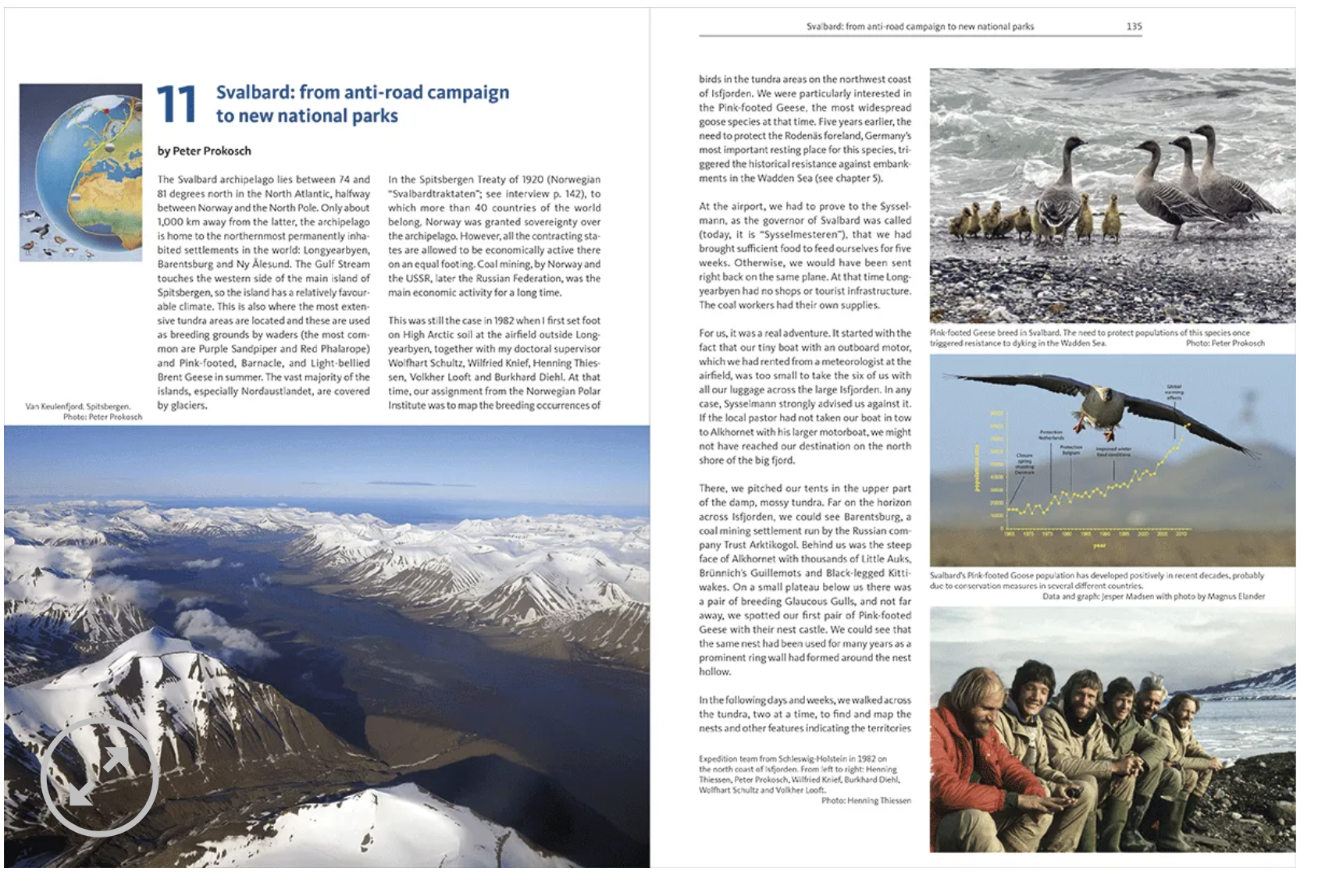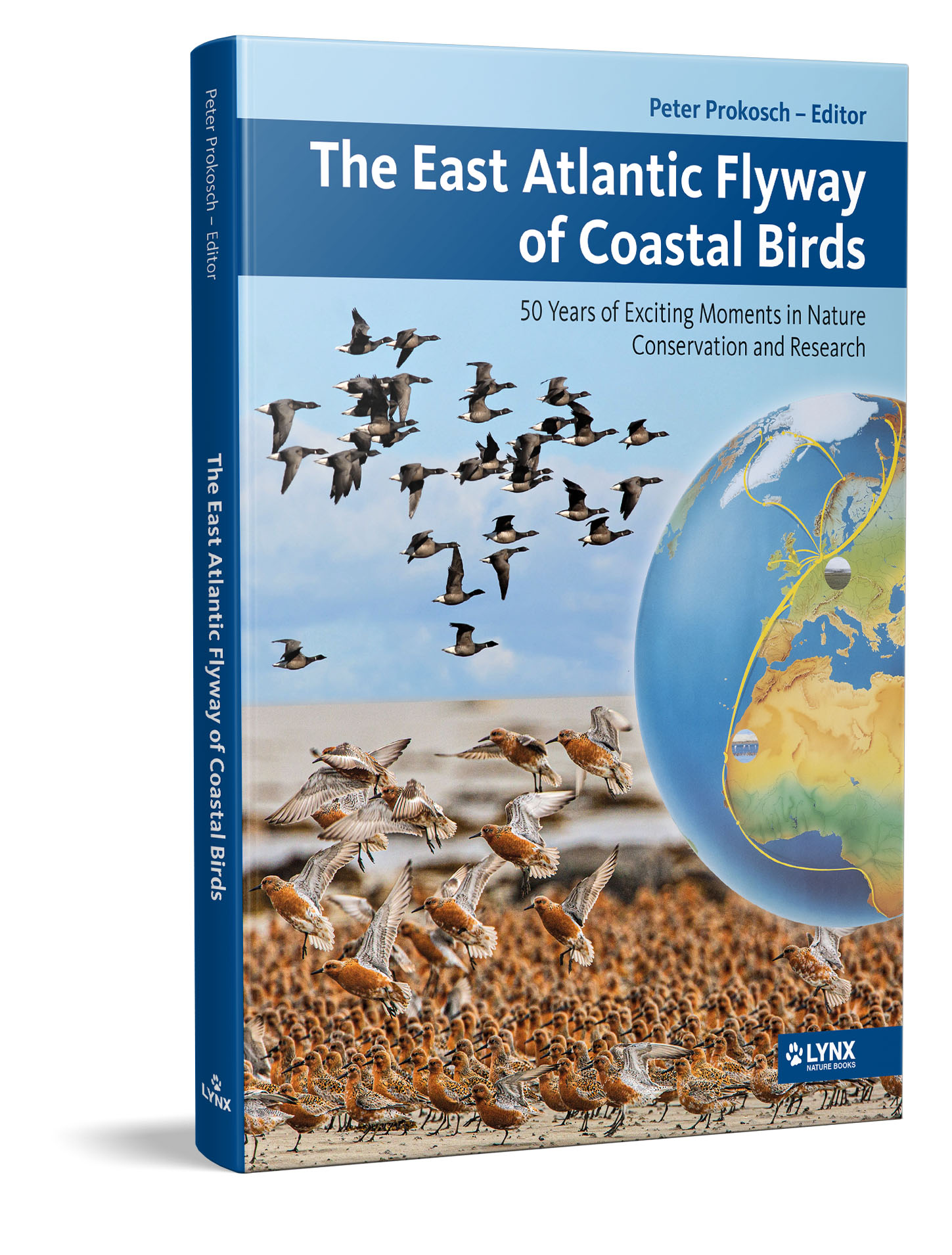In April 2023, experts from nine countries met on Hallig Langeneß in the Wadden Sea for the “East Atlantic Flyway Week”, organised by WWF, Schutzstation Wattenmeer and Linking Tourism & Conservation (LT&C). They reviewed 50 years of research and conservation successes along this migration route and outlined a book about these exciting stories of the time. Six months later, the German version of the book appeared already at Aula Verlag. In March 2024, the English version, published by Lynx Nature Books, came on the market.
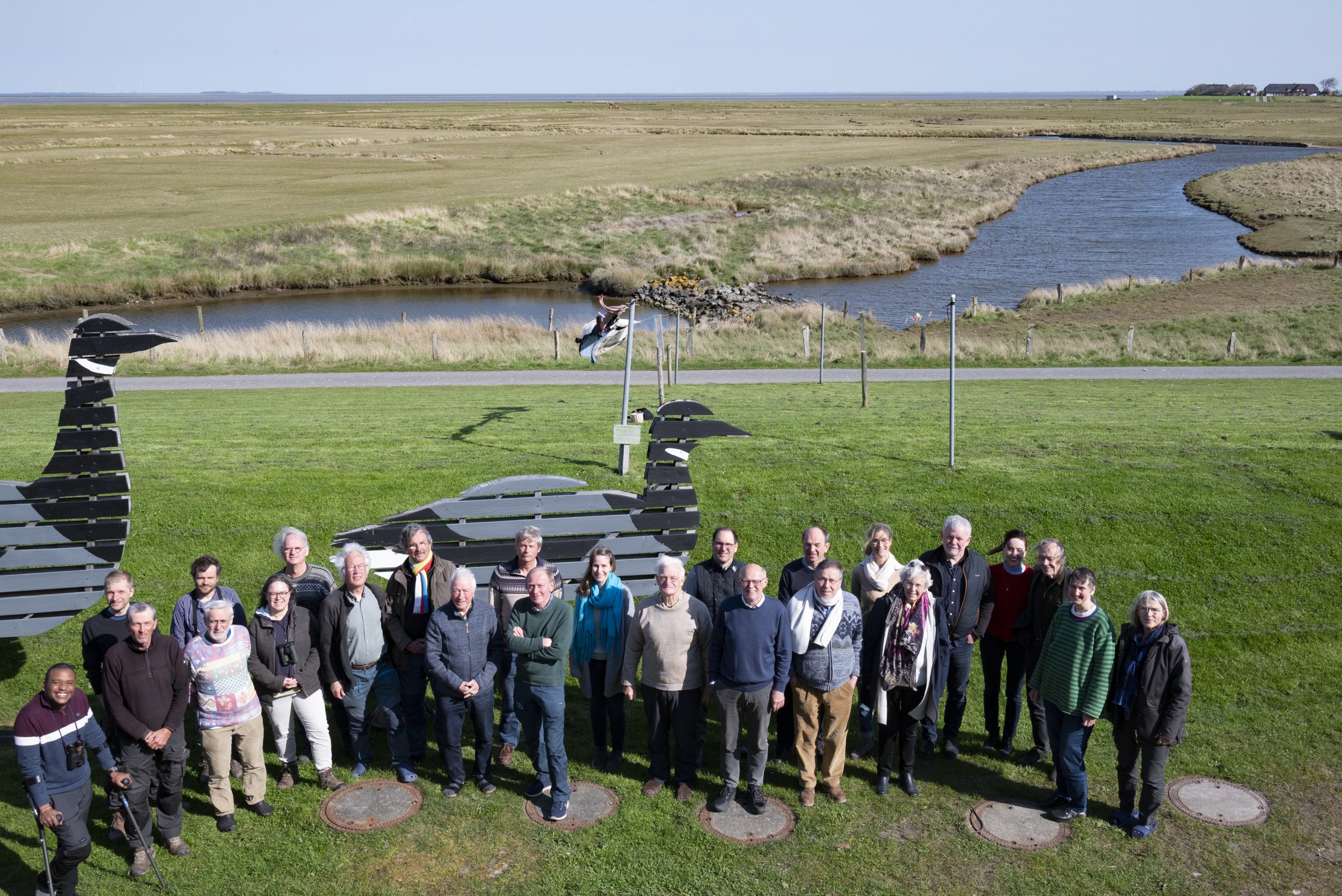
Who has not seen the picture of the East Atlantic Flyway of shorebirds in one of the numerous information centres in the Wadden Sea? From the Wadden Sea as the central hub, the long migratory routes extend to the Arctic breeding grounds of north-eastern Canada, Greenland, Svalbard and northern Siberia. Southwards to the wintering grounds, the lines extend along the West African coast to the West Coast National Park in South Africa.

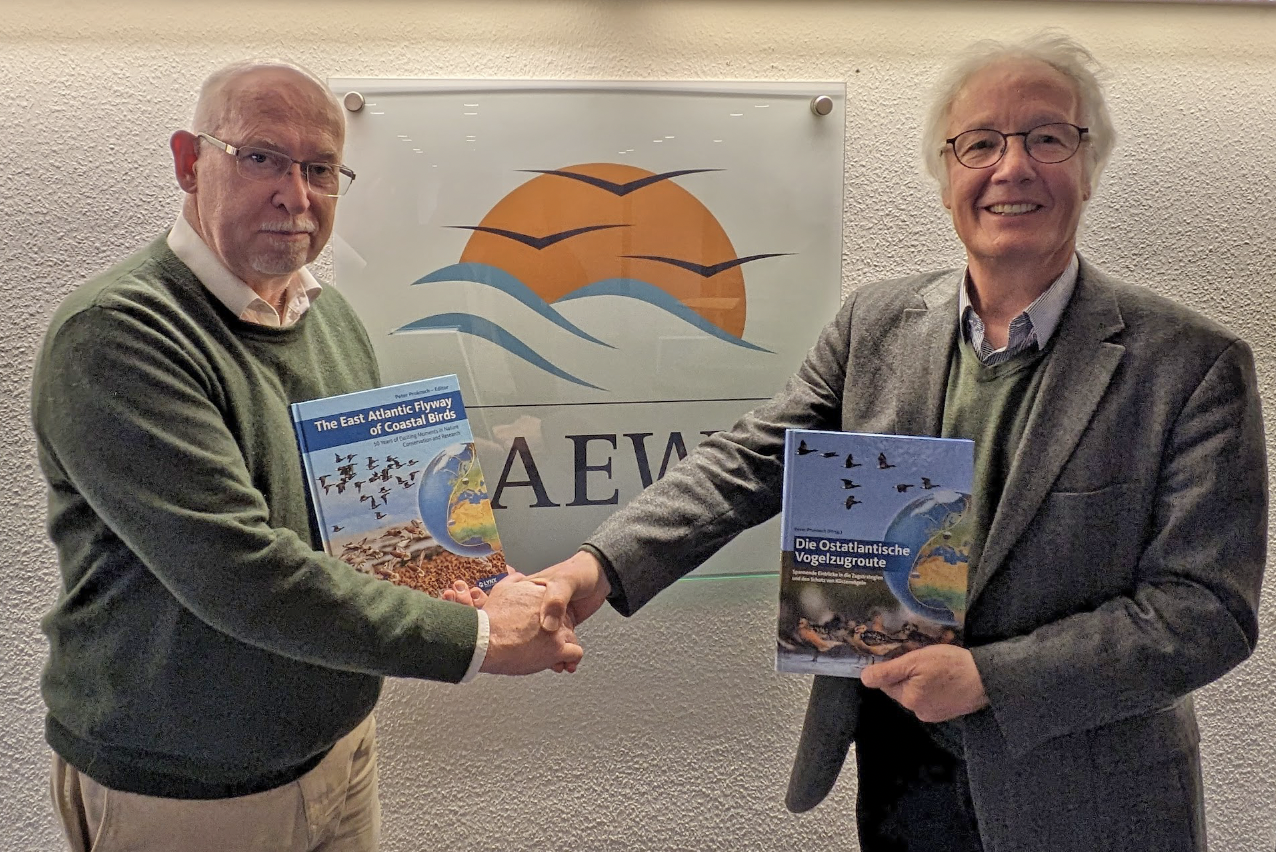
The „East Atlantic Flyway“ is one of the most spectacular and longest shorebird migration routes. Red Knots, Bar-tailed Godwits, Brent Geese & Co. cover up to 16,000 kilometres on it twice a year!
But what do we know about the marathon flights of these birds? How do they manage to perform such tremendous physical feats? A group of renowned researchers has been working intensively on these questions for decades and has discovered astonishing things about the migration strategies of shorebirds. One thing became increasingly clear: the Wadden Sea on the North Sea coast of the Netherlands, Germany, and Denmark is the vital food and energy filling station and, thus, the „strategic hub“ for millions of shorebirds!
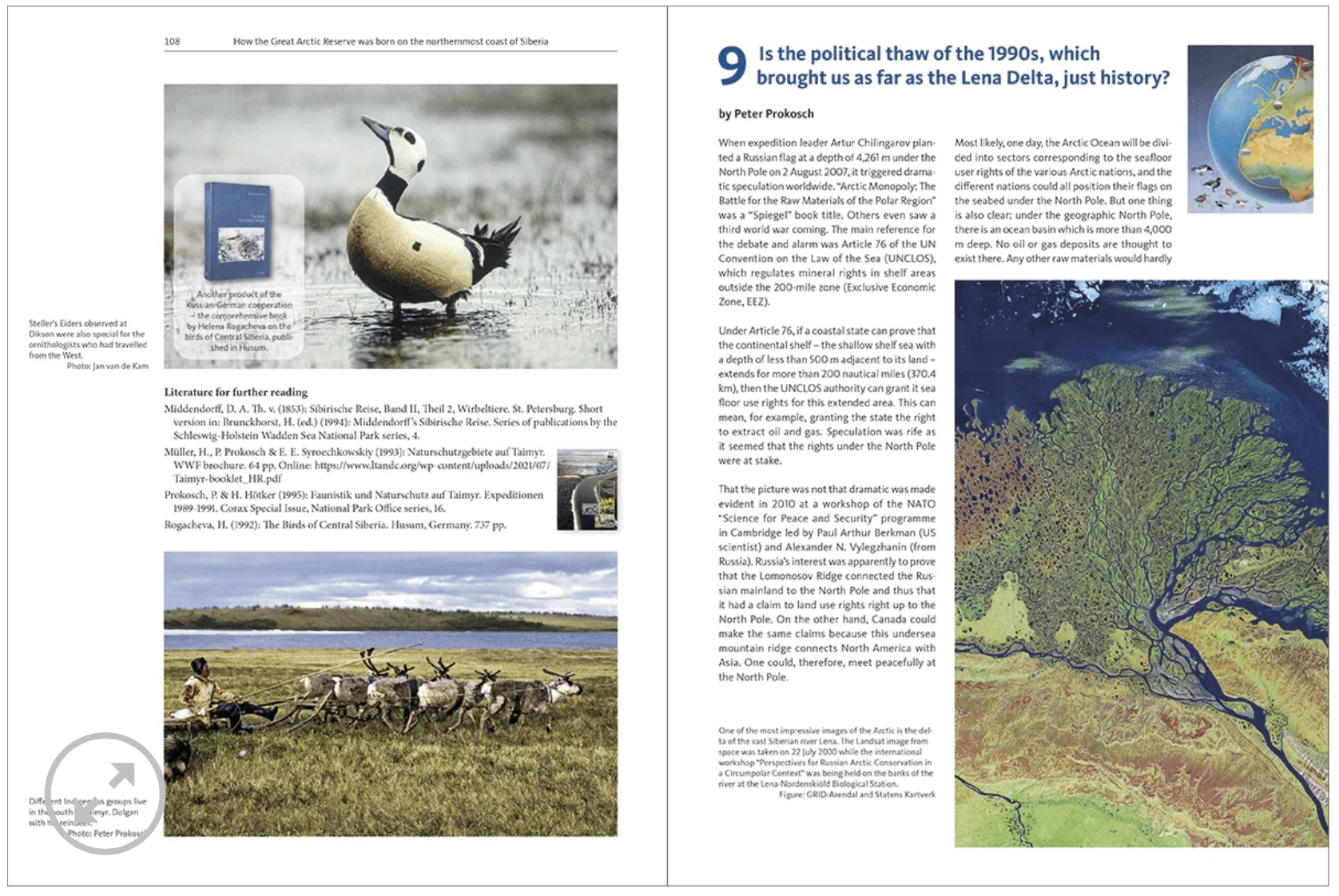
In 18 chapters, the book covers a broad and diverse range of topics. Written predominantly from a Wadden Sea perspective, it deals with topics such as
- The role of the Wadden Sea in the establishment of the UN Convention on the Conservation of Migratory Species of Wetlands (CMS) and the African-Eurasian Waterbird Agreement (AEWA);
- How the populations of Wadden Sea birds along the entire flyway can be monitored at all;
- How former plans for a new London airport triggered long-lasting research programmes on Brent Geese, and what we now know about this typical Wadden Sea bird species:
- The latest knowledge of how Red Knots and Bar-tailed Godwits perform thousands of kilometres of non-stop flight;
- How it came from resistance to dyking to national parks in the Wadden Sea;
- How special moments and expeditions brought about exciting stories about the creation of protected areas in the Arctic of Northern Siberia, Svalbard, Iceland and also on the Baltic Sea coast;
- The particular window of environmental cooperation with Russia;
- A look at the work being done today by young African biologists to develop the Banc d’Arguin National Park in Mauritania and the Bijagós Archipelago in Guinea Bissau;
- What relations does the Wadden Sea have with Ukraine’s Sivash (current war zone) and China and Korea’s Yellow Sea;
- What we need to do for positive surprises.
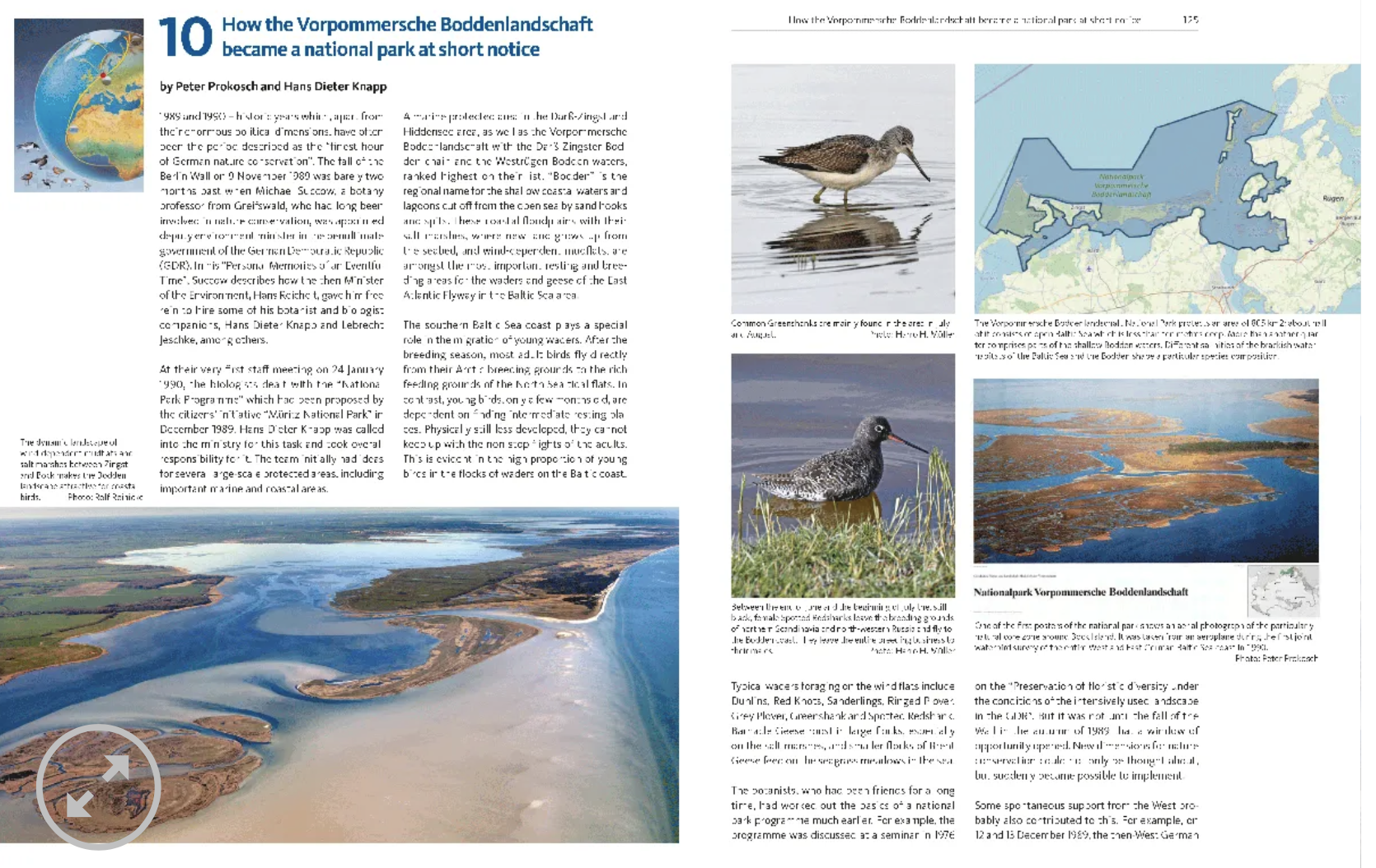
Anyone interested in reading more about 50 years of exciting moments in nature conservation and coastal bird research along the entire flyway may get a copy. It may also be an ideal present for those whom you want to make interested in fascinating birds and nature conservation. Finally, it should be available in all Wadden Sea Information Centres to deepen the understanding of conservation measures and protected areas along the flyway. Last, it proves the importance of linking tourism and conservation to reach the 30 x 30 goal of protecting 30% of the global land and marine area with ball eco-regions and habitats represented.
